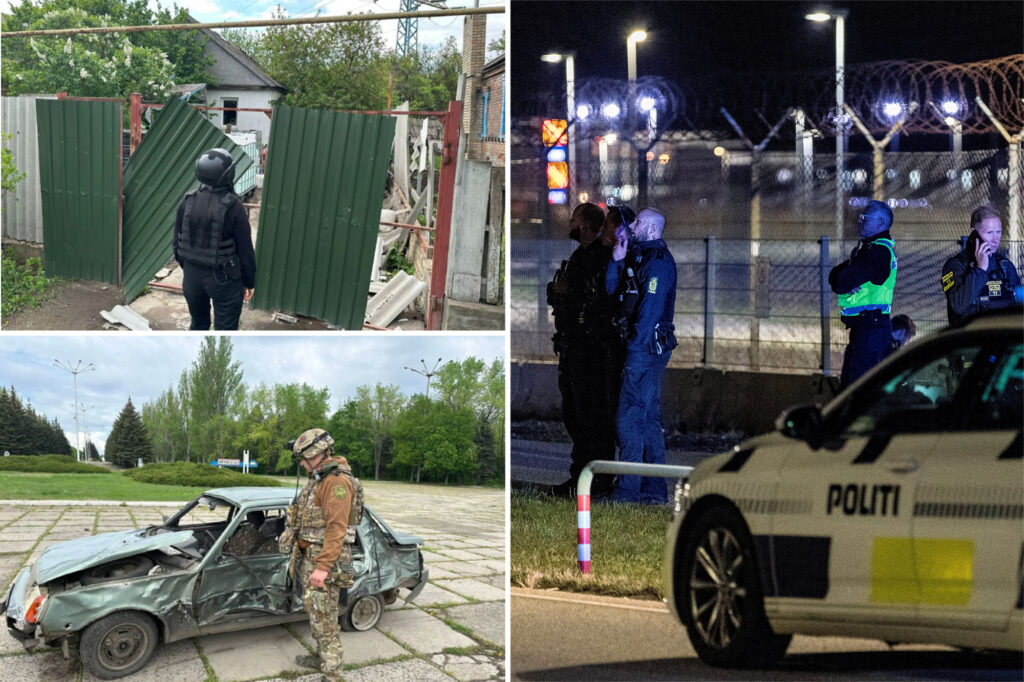
FILE PHOTO: Police officers stand guard after all traffic has been closed at the Copenhagen Airport due to drone reports in Copenhagen, Denmark September 22, 2025. Ritzau Scanpix/Steven Knap via REUTERS ATTENTION EDITORS - THIS IMAGE WAS PROVIDED BY A THIRD PARTY. DENMARK OUT. NO COMMERCIAL OR EDITORIAL SALES IN DENMARK./File Photo : Drone reports at Copenhagen Airport
Security concerns escalated on March 16, 2024, following the sighting of drones over Denmark and Lithuania. These incidents have raised alarms about potential Russian aggression, amidst ongoing military operations in Ukraine. This marks the latest in a series of drone activities that have violated NATO airspace in regions including Estonia, Poland, and Romania in recent weeks.
In Denmark, multiple drones were reported near military installations overnight, prompting a deployment of units from the Danish Armed Forces. Earlier in the week, drones were also detected near four airports, causing significant disruptions to flights in the capital, Copenhagen. The government is now assessing the implications of these incidents on national security.
Lithuania also experienced a drone sighting, with three drones observed flying near the capital’s Vilnius Airport, as reported by the Lithuanian broadcaster LRT. The recurrence of these drone activities is seen as a challenge to European defense capabilities, with Ukrainian President Volodymyr Zelensky asserting that such actions by Russia are intended to test Europe’s resolve. He stated on X, “Russia is testing Europe’s ability to defend itself and trying to influence societies so that people start thinking: ‘Why are we giving everything to the Ukrainians when we can’t even protect ourselves?’”
Zelensky further disclosed that earlier this month, 92 drones attempted to breach Polish airspace, with Ukrainian forces managing to shoot down most of them, while 19 drones successfully entered NATO territory. This highlights the pressing nature of aerial threats in the region, as tensions continue to escalate.
As these drone sightings unfold, the Kremlin remains focused on its military campaign in Ukraine. Recent Russian strikes have resulted in the deaths of two civilians and injuries to at least 36 individuals across the country. In the Donetsk region, a focal point of the conflict, Ukrainian Governor Vadym Filashkin reported that over 600 residents were evacuated due to airstrikes targeting civilian infrastructure, including homes and a church. Filashkin noted that Russian forces shelled the area 40 times in just one day.
Ukrainian air defense systems successfully intercepted 97 of the 115 drones launched by Russia, showcasing their defensive capabilities amid ongoing hostilities. In a retaliatory move, Ukraine targeted an oil pumping station in Russia’s Chuvash Republic, leading to the suspension of its operations. This attack coincided with a recent Russian decision to implement a partial ban on diesel exports until the end of the year, as well as an extension of an existing gasoline export ban following a series of Ukrainian drone strikes on Russian refineries.
The situation remains fluid as both nations navigate the complexities of ongoing conflict and heightened security concerns. The international community continues to monitor developments closely, particularly as Europe grapples with the ramifications of these drone activities and the broader implications for regional stability.






